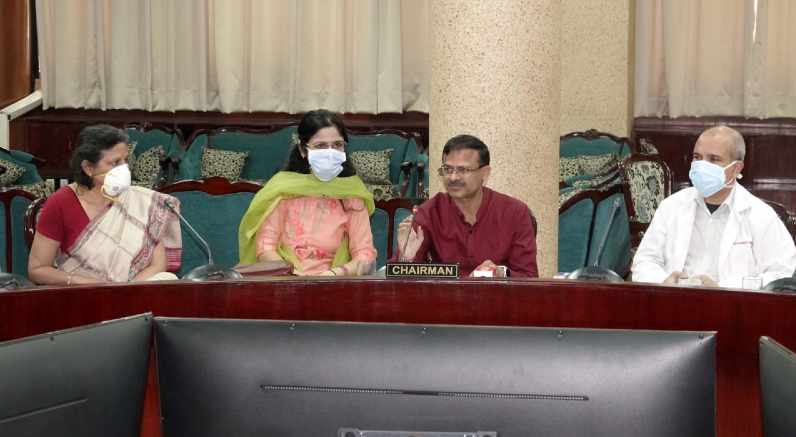First-time in world, the innovative technique that has been developed for the Cushing Disease patients, PGIMER set another benchmark as Deptt. of Endocrinology and Deptt. of Nuclear Medicine collaborated to develop a novel imaging modality Ga 68 CRH PET-CT for the diagnosis of Cushing’s disease. Prof. Sanjay Kumar Bhadada Head, Deptt. of Endocrinology and other doctors detailed about the initiative included Dr. Rama Walia, Deptt. of Endocrinology, Dr. Jaya Shukla, Dr. Rajender Kumar & Dr. Harmandeep Singh from Deptt. of Nuclear Medicine, faculty members and resident doctors from both the departments.
At the outset, Prof. Sanjay Kumar Bhadada stated’ “This innovative modality will enable us to detect the Cushing disease at earlier level. With this quality of medical technology through advances in technology, we can more widely address the medical conditions that are prevalent and reduce the level of human suffering.”
Detailing about the pioneering modality, Dr. Rama Walia shared, “This modality is known as Ga 68 CRH PET-CT. This imaging could localize the tumor in all the patients studied. This technique has been developed for the first time in the world and we have applied for a patent for this. This could delineate tumor in all the 24 cases studied and the paper got published in one of the prestigious journals of Endocrinology, JCEM, Journal of clinical endocrinology & metabolism, Prof. Bhadada stated.
Elaborating on the Cushing’s syndrome, Dr Jaya Shukla explained, “It is a hormonal disorder associated with excess production of cortisol. Cortisol is a hormone produced by the body form the adrenal gland to fight stress. Adrenal gland is furthermore under the control of the master gland i.e. pituitary. Excess production of cortisol results in weight gain with thinning of extremities, hypertension, loss of bone mass, changes in mood like depression, hair loss, striae on abdomen, bluish patches on skin. Once diagnosed, the treatment is rewarding in terms of remission of diabetes & hypertension, decrease in weight and improvement in bones strength and mood.
Usual cause for this syndrome is a small tumor in the pituitary, which produces excess ACTH, which further acts adrenals and increases the production of cortisol. These tumours are so small that MRI is able to pick up these tumours in almost 60-70% of cases only. Patients in which tumour is not localized, require an invasive procedure i.e. inferior petrosal sinus sampling. This procedure is not only invasive but also expensive, further added Prof. Bhadada.
Prof Bhadada further explained, “Moreover, the results are not very reliable. We at PGIMER, by collaboration between departments of Endocrinology & Nuclear Medicine developed an imaging modality to delineate these small tumors, scientifically known as corticotropinomas,
Sharing about the way forward, Prof. Bhadada stated, “We plan to bring diabetes to remission using intensive medical therapy. The criteria for enrolment in the study are age less than 65 years, type 2 diabetes of less than 2 years duration, HbA1c <8.5 ,no renal dysfunction and the patient should not be on insulin. For the enrolment, patients may contact on the phone no -7087007322 on Friday and Saturday between 6-7pm.”

